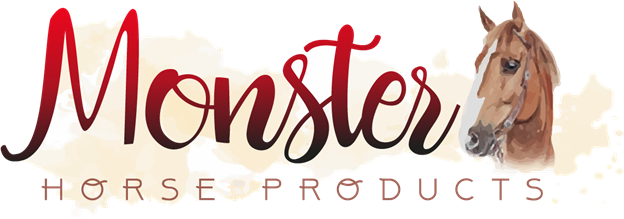“Take care of your horse and your horse will take care of you.” That old saying rings truer than ever when it comes to proper horse care — and nothing demonstrates responsible horsemanship more than understanding the 20% rule.
So, what does it mean? In simple terms: A horse should carry no more than 20% of its body weight, including the rider, saddle, and tack. But let’s break it down further, because following this rule can make the difference between a sound, happy horse and one at risk for injury or burnout.
🧠 What Exactly Is the 20% Rule?
The 20% rule is a widely recognized guideline in the equine world. It states that a horse can safely carry up to 20% of its body weight. That includes:
-
Rider
-
Saddle
-
Bridle
-
Any additional equipment
For example, a horse weighing 1,000 pounds shouldn’t carry more than 200 pounds total.
This isn’t just tradition or anecdotal wisdom — it’s backed by research. Studies from institutions like Delaware Valley University show that horses begin to show signs of physical stress when they carry loads over that 20% threshold.
🏋️ Factors That Affect Weight-Carrying Capacity
Not all horses are created equal. Here are the biggest variables that influence whether your horse can carry more — or less:
1. Horse’s Fitness and Health
A healthy, conditioned horse with strong muscling and endurance will handle weight better than an unfit or overweight one. If you're unsure, make horse health monitoring a regular part of your routine.
2. Conformation
A horse with a broad back, short loin, and strong hindquarters is better built to bear weight evenly and comfortably.
3. Breed
Some breeds, like Icelandic horses, are genetically adapted to carry heavier loads, but this doesn't mean they should be overloaded. Stick to smart, balanced horse care practices no matter the breed.
4. Rider Skill and Balance
A centered, balanced rider causes less strain on a horse than a rider who bounces or leans heavily to one side. This is why proper training and horse handling matter.
5. Activity Type
Trail riding? Short arena session? Galloping cross-country? The more intense and sustained the effort, the more weight matters.
📊 Tack Weight Matters, Too
Let’s not forget that saddles, bridles, and other gear can add 20–30 pounds on their own. Always factor in your tack weight as part of the total load.
We recommend checking out this guide on horse exercise and fitness to make sure your horse stays in peak shape to support the proper weight.

🚨 Risks of Ignoring the 20% Rule
Going over the limit may lead to:
-
Muscle fatigue and soreness
-
Lameness
-
Long-term joint issues
-
Behavioral problems due to discomfort
Practicing good horse care means recognizing these risks and avoiding them.
🧮 Real-World Examples
| Horse Weight | Max Total Carrying Weight |
|---|---|
| 900 lbs | 180 lbs |
| 1,000 lbs | 200 lbs |
| 1,200 lbs | 240 lbs |
| 1,400 lbs | 280 lbs |
These numbers include both rider and tack. If you're using a Western saddle, which can weigh 40 lbs, plan accordingly.
🐴 Beyond Weight: The 1/2/3 Rule for Horses
The 1/2/3 rule is another helpful horse care tip:
-
1 hour after feeding, wait before riding
-
2 hours of turnout time minimum per day
-
3 gallons of water per hour in hot weather or during exercise
You’ll find more on this in our article on Daily Horse Grooming & Wellness.
🛠️ Tools for Better Horse Health
At Monster Horse Products, we specialize in equine comfort and care — especially when it comes to common pressure injuries like shoe boils, olecranon bursa, and capped elbows.
✅ Shoe Boil Boots and Solutions
Our Shoe Boil Boot helps reduce elbow trauma caused by lying down on hard surfaces or improper bedding. It's the go-to shoe boil treatment for preventing swelling and long-term discomfort.
✅ Shoe Boil Bracelet
Our Shoe Boil Bracelet is perfect for horses that dislike boots. It applies gentle pressure without interfering with leg movement — a smart shoe boil solution for sensitive horses.
✅ Medical Wraps
Designed to stay in place during turnout or rest, our Medical Wraps help apply targeted compression and reduce inflammation. These are ideal for managing capped elbow flare-ups or olecranon bursa issues in performance horses.
For more expert guidance, visit our detailed breakdown of shoe boil solutions and best practices.
🔄 Wrapping It Up: Smart Horse Care Is Lifelong
Understanding the 20% rule for horses isn’t just about numbers — it’s about being a responsible, compassionate horse owner. Combine it with:
-
Daily horse exercise
-
Regular equine dental care
-
Clean, dry horse shelters
-
Thoughtful horse socialization
-
Effective environmental horse care
And always monitor your tack fit, hoof health, and general behavior to spot small issues before they become major problems. Here's our popular read on horse hoof care tips to dive deeper.
🔔 Ready to Level Up Your Horse Care?
Explore our full line of premium, USA-made products at MonsterHorseProducts.com. Whether you’re tackling a new shoe boil treatment, rethinking your horse's workload, or upgrading your grooming routine — we’re here to help.
And remember, good horse care is smart, consistent, and always evolving. So stay tuned, stay educated, and treat your horse like the legend they are!
🔗 Internal Blog Links You Might Like:
